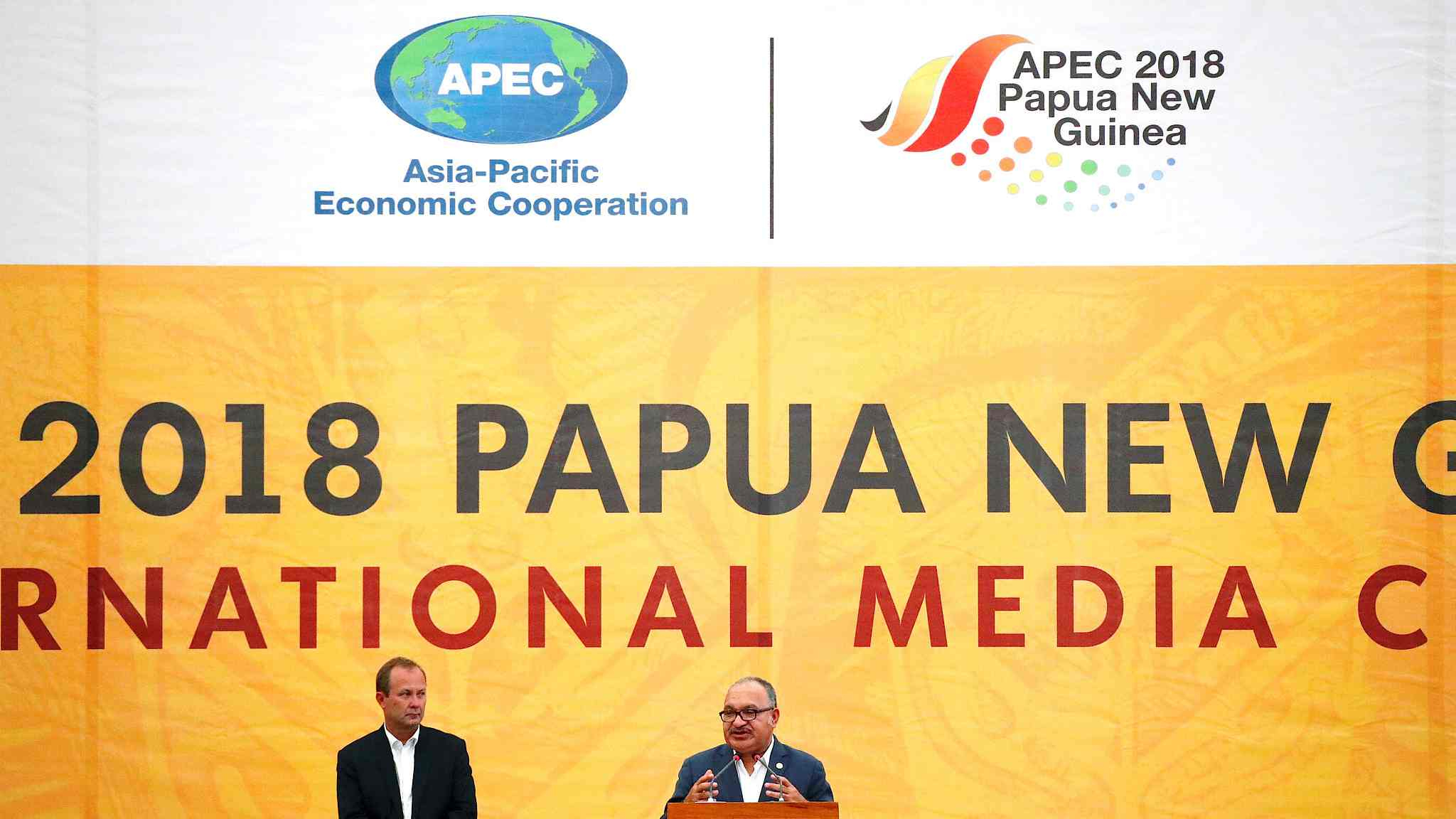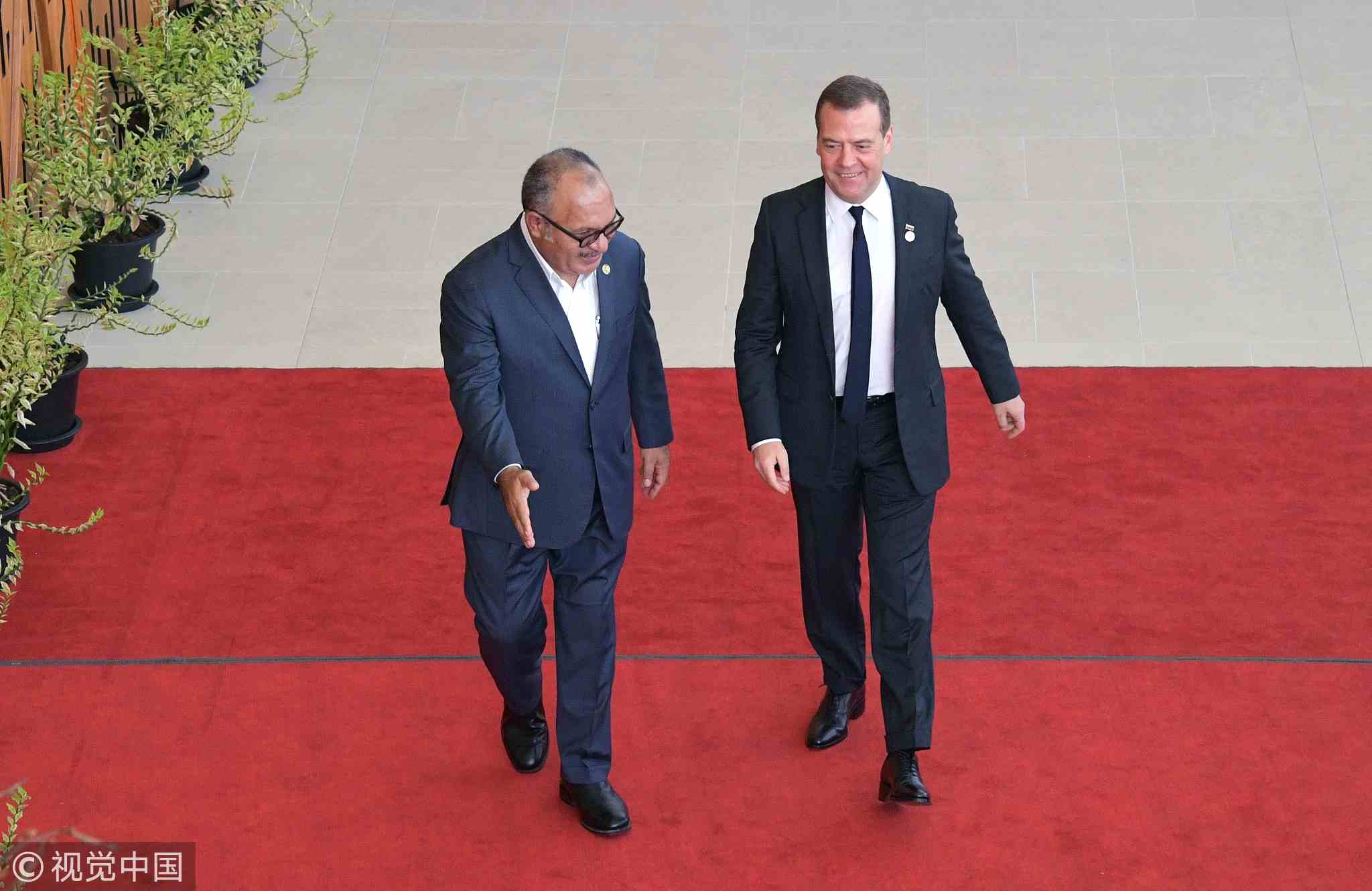
Opinions
18:26, 19-Nov-2018
Opinion: APEC vision is to take economic integration to new level
Updated
17:50, 22-Nov-2018
Liu Chenyang

Editor's note: Liu Chenyang is the director of the APEC Study Center of Nankai University. The article reflects the author's opinion and not necessarily the views of CGTN.
During a speech at the APEC Economic Leaders' Meeting, Chinese President Xi Jinping stressed that leaders in the Asia-Pacific region share a common responsibility for charting the long-term development course for APEC and drawing up a post-2020 vision.
The Bogor Goals, a set of target goals aimed at realizing free and open trade in the Asia-Pacific region, was agreed on by APEC members in 1994 in Bogor, Indonesia. According to the Bogor Goals, the developed and developing member economies of APEC aim to achieve trade and investment liberalization in 2010 and 2020 respectively.
The adoption of the Bogor Goals built a lighthouse for trade and investment liberalization among APEC members and speeded up the process of Asia-Pacific regional economic integration.

Russian Prime Minister Dmitry Medvedev and Prime Minister of Papua New Guinea Peter O'Neill (L) before a joint photo session of leaders of the Asia-Pacific Economic Cooperation (APEC) in Port Moresby, Papua New Guinea, on November 18, 2018. /VCG Photo
Russian Prime Minister Dmitry Medvedev and Prime Minister of Papua New Guinea Peter O'Neill (L) before a joint photo session of leaders of the Asia-Pacific Economic Cooperation (APEC) in Port Moresby, Papua New Guinea, on November 18, 2018. /VCG Photo
Since then, APEC has been pursuing its visions with the Bogor Goals at the heart. The APEC Approach featuring voluntarism, mutual benefit, consensus, flexibility and progressiveness has played a positive role in promoting the realization of the Bogor Goals.
The markets of APEC member economies have become more and more open, exemplified by a significant reduction of trade and investment barriers, the gradual elimination of non-tariff barriers and the improvement of market transparency. Thanks to the improvement in the business environment, a vibrant regional market for services has also emerged.
While recognizing the achievements made by APEC member economies under the framework of the Bogor Goals, we should also notice that there seems to be some ambiguity in the definition and a lack of quantitative standards for trade and investment liberalization.
However, this ambiguity has provided APEC's diverse members with a certain degree of institutional comfort or flexibility, allowing them to participate in Asia-Pacific economic cooperation according to their own capacity on a voluntary basis.
But still, there is much room for this forum to improve its operating efficiency and cooperation effectiveness. Shaping the future of the Asia-Pacific region needs a more efficient and vibrant platform. Therefore, APEC is expected to take effective measures to improve its operational mechanism and internal organizational structure in a pragmatic and progressive manner.
The Bogor Goals will expire in 2020. APEC's post-2020 vision should not be limited to the upgrading of the trade and investment liberalization target, but we should also seize the historic opportunity and make a top-level design and overall planning for the Asia Pacific regional economic cooperation at the new stage, so as to inject more vitality into APEC's development.
Furthermore, APEC accounts for 55 percent of the world's GDP and 44 percent of the world's total trade, making it one of the largest and most influential regional economic cooperation forums in the world.
Consequently, the post-2020 new vision is not only crucial for the future development of APEC but is also of great significance to the improvement of global economic governance.
It should keep pace with the times to adapt to the new trend of Asia Pacific regional economic cooperation.

Australia's Prime Minister Scott Morrison (R), South Korea's President Moon Jae-in (2nd R), Canada's Prime Minister Justin Trudeau (2nd L) and Chile's President Sebastian Pinera arrive for a group photo during the Asia-Pacific Economic Cooperation (APEC) Leaders' Meeting in Port Moresby, November 18, 2018. /VCG Photo
Australia's Prime Minister Scott Morrison (R), South Korea's President Moon Jae-in (2nd R), Canada's Prime Minister Justin Trudeau (2nd L) and Chile's President Sebastian Pinera arrive for a group photo during the Asia-Pacific Economic Cooperation (APEC) Leaders' Meeting in Port Moresby, November 18, 2018. /VCG Photo
During the past three decades, APEC members have accumulated much experience and made great achievements in Asia-Pacific economic cooperation, which has consequently increased their interdependence. Meanwhile, APEC members' willingness and capacity to participate in higher-level regional economic integration have generally been strengthened as well.
Therefore, the new vision should cater to the common interests of APEC member, and a clearer and more ambitious goal should be set to further promote the Asia-Pacific region's economic integration.
Considering that significant gaps in economic development among APEC members will continue to exist in the post-2020 era, it is of great significance to maintaining the APEC Approach in general.
Furthermore, APEC should put emphasis on strengthening the spirit of inclusiveness, mutual benefits and openness, shaping the future through Asia-Pacific partnerships and building an open regional economy. APEC members should also build consensus and make adjustments to the overall cooperation framework.
These efforts will be very meaningful to take the Asia-Pacific region's economic integration to a new level and inject new impetus to promote sustainable and high-quality economic growth of the region.
(Cover: Papua New Guinea Prime Minister Peter O'Neill speaks as the Asia Pacific Economic Cooperation (APEC) chief executive Chris Hawkins listens during a media conference at the end of the APEC forum in Port Moresby, Papua New Guinea, November 18, 2018. /VCG Photo)
(If you want to contribute and have specific expertise, contact us at opinions@cgtn.com)

SITEMAP
Copyright © 2018 CGTN. Beijing ICP prepared NO.16065310-3
Copyright © 2018 CGTN. Beijing ICP prepared NO.16065310-3